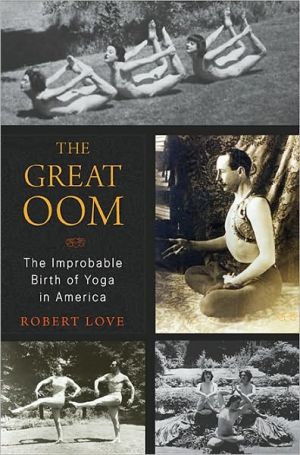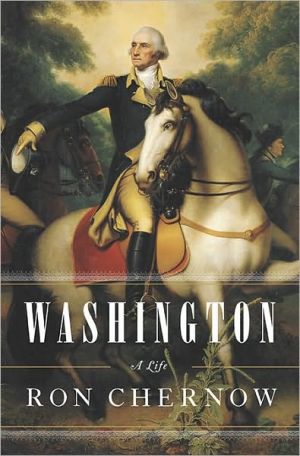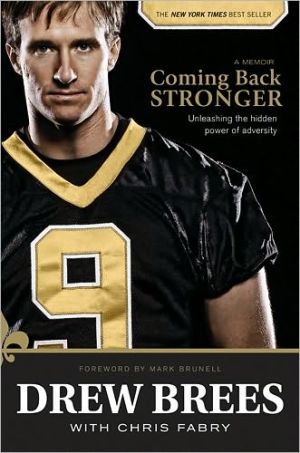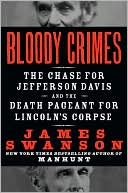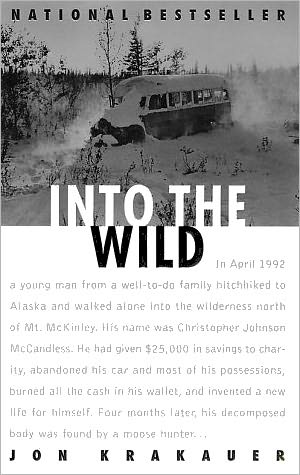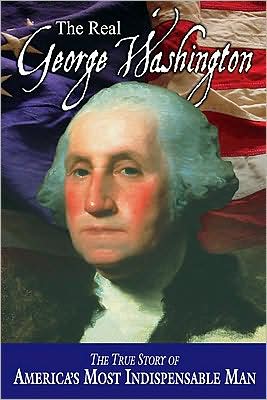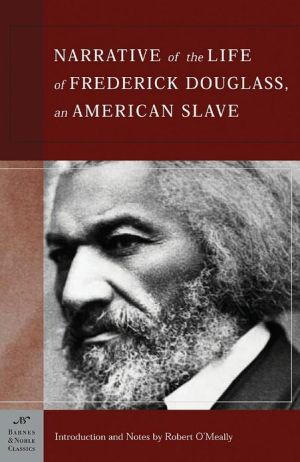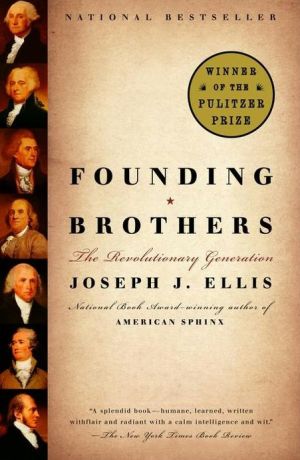The Great Oom: The Improbable Birth of Yoga in America
The amazing story of how yoga came to America-and the charming rogue who made it possible\ In Jazz Age New York, there was no place hotter than the Clarkstown Country Club, where celebrities such as Leopold Stokowski mingled with Vanderbilts, Goodriches, and Great War spies. They came for the club's circuses and burlesques but especially for the lectures on the subject at the heart of the club's mission: yoga. Their guru was the notorious Pierre Bernard, who trained with an Indian master and...
Search in google:
The amazing story of how yoga came to America-and the charming rogue who made it possible In Jazz Age New York, there was no place hotter than the Clarkstown Country Club, where celebrities such as Leopold Stokowski mingled with Vanderbilts, Goodriches, and Great War spies. They came for the club's circuses and burlesques but especially for the lectures on the subject at the heart of the club's mission: yoga. Their guru was the notorious Pierre Bernard, who trained with an Indian master and instructed his wealthy followers in the asanas and the modern yogic lifestyle. Robert Love traces this American obsession from moonlit Tantric rituals in San Francisco to its arrival in New York, where Bernard's teachings were adopted by Wall Streeters and Gilded Age heiresses, who then bankrolled a luxurious ashram on the Hudson River-the first in the nation. Though today's practitioners know little of Bernard, they can thank his salesman's persistence for sustaining our interest in yoga despite generations of naysayers. In this surprising, sometimes comic story, Love uncovers the forgotten life and times of the colorful, enigmatic character who brought us hatha yoga. The Great Oom delves into the murky intersection of mysticism, money, and celebrity that gave rise to the creation of one of America's most popular practices and a fivebillion-dollar industry. The Barnes & Noble Review I'm sure I'd been told that my 3-year-old son's preschool offered yoga, but I had forgotten until one day, several weeks into the school year, when he plopped down on the living-room rug, twisted himself into a passable lotus position, took in a deep breath, and uttered a drawn-out "peace" on the exhale. Journalist Stefanie Syman opens The Subtle Body: The Story of Yoga in America with a moment that provided her with her own proof of yoga's triumph over our culture: the inclusion of yoga workshops at last year's White House Easter Egg Roll. "Our goal today is just to have fun," Michelle Obama said in her welcoming remarks. "We've got yoga, we've got dancing, we've got storytelling." The fact that this review covers two new releases on the topic is further testament to the current domination of yoga, which has endured long periods of ill-repute throughout our history. While Syman's admirable book takes a broad look at yoga's journey to the mainstream, Robert Love's The Great Oom: The Improbable Birth of Yoga in America focuses on a riveting slice of that story, tracing the life of Pierre Bernard, the freethinking yogi who, though largely forgotten today, was a fixture in the tabloid press in the early 20th century for operating a notorious ashram in Nyack, New York.
\ Library JournalPierre Bernard (1875–1955) is not a household name, yet most of us are familiar with his life's work—hatha yoga. Author Love (former managing editor, Rolling Stone), spurred on by his own curiosity, spent seven years learning all he could about this mysterious and intriguing figure. Hailed as "the father of yoga in America," Bernard was a lively character—enigmatic yet outrageous. Love takes the reader along Bernard's fascinating journey, from his childhood in Iowa through prequake San Francisco to Jazz Age New York. Every step of the way, the reader becomes a member of Bernard's inner circle, sharing his triumphs and his disappointments. We are, at times, shocked by Bernard's abilities—which include going into deep trances where he is impervious to pain—and, at other times, amused by his antics. Throughout, Bernard is an attention-grabbing character, and Love does a wonderful job of drawing the reader into his world of magic and mischief. VERDICT All lovers of biography will enjoy this book, as well as readers interested in yoga, or occult or esoteric practices.—Sonnet Erin Brown, Univ. of New Orleans Lib.\ \ \ \ \ Janet Maslin…a lively and idiosyncratic Bernard biography…"Dr. Bernard seems to delight in being a surprising person," Fortune magazine wrote about this protean character in 1933, and Mr. Love entertainingly explains what Fortune meant.\ —The New York Times\ \ \ Publishers WeeklyEastern spirituality and Western commercialism fuse in this flamboyant tale of an iconic American guru. Journalist Love tells the story of Pierre Bernard, a yoga adept from Iowa who made a splash at the turn of the 20th century by enduring bloody piercings and lacerations under trance. His Tantrik Order of disciples in San Francisco and New York soon gained notoriety; after police raided his schools, Bernard was accused of seducing girls and conducting sacred orgies. Delighted tabloids dubbed him “The Great Oom.” Bernard rehabilitated himself in the 1920s with the Clarkstown Country Club, a yoga-themed resort and rehab center for the rich on the Hudson, financed by a parade of heiresses who fell under his sway. Love makes his hero a quintessentially American character who yoked his mystic bent to a brash entrepreneurialism; with the riches he made from his yoga initiatives, he started a chemical company, an airport, a semipro baseball team with a midget second baseman, and a trained elephant act. Love credits Bernard with changing public perception of yoga from dissolute exoticism to healthful normalcy, but this colorful, frenetic tale reminds us that money is America's true religion. Photos. (May)\ \ \ \ \ Kirkus ReviewsFormer Rolling Stone managing editor Love delivers a spirited portrayal of the colorful life of early yoga impresario Pierre Bernard (1876-1955). It wasn't the Beatles who brought Indian spirituality to America, the author discovered, but a Leon, Iowa, native and autodidact (born Perry Arnold Baker) who established the first yoga centers from San Francisco to New York City. As a teenager, Bernard came under the spell of a Calcutta-born emigre, Sylvais Hamati, a Tantric yogi and itinerant tutor of "Vedic philosophy." During the course of nearly 20 years, Bernard proved his devoted student of hatha yoga-involving postures, breathing techniques and physical cleansing-as well as Sanskrit, the meditative arts, ethics, philosophy and more. In this straight-laced Victorian era, Bernard's advocacy of physical yoga-as opposed to the Christianized forms then in vogue, espoused by the Theosophical Society and others-raised hackles, especially since most of Bernard's students were young women clad in tights. From San Francisco to the Pacific Northwest, his Tantrik Order, featuring blood oaths, secret initiation rituals and cryptic symbols, became wildly successful among the rich and idle, and Bernard eventually relocated to a Manhattan townhouse. Once the vice squad caught wind of the goings-on, Bernard was imprisoned, branded in the newspapers as the Omnipotent Oom and hounded out of town. He and his new partner, dancer Blanche DeVries, relocated to New Jersey, then to a large estate in bucolic Nyack, N.Y. Financed by well-heeled clients such as Margaret Rutherford Mills and the Vanderbilt family, the ashram held circuses, baseball games, classes and functioned as a celebrity rest retreat, until itsglory waned after the war. Structured in thematic sections, Love's work proceeds with a thoroughgoing vitality. "Genius or fraud?" American guru Bernard garners an evenhanded new consideration. Agent: Suzanne Gluck/William Morris\ \ \ \ \ The Barnes & Noble ReviewI'm sure I'd been told that my 3-year-old son's preschool offered yoga, but I had forgotten until one day, several weeks into the school year, when he plopped down on the living-room rug, twisted himself into a passable lotus position, took in a deep breath, and uttered a drawn-out "peace" on the exhale. Journalist Stefanie Syman opens The Subtle Body: The Story of Yoga in America with a moment that provided her with her own proof of yoga's triumph over our culture: the inclusion of yoga workshops at last year's White House Easter Egg Roll. "Our goal today is just to have fun," Michelle Obama said in her welcoming remarks. "We've got yoga, we've got dancing, we've got storytelling." The fact that this review covers two new releases on the topic is further testament to the current domination of yoga, which has endured long periods of ill-repute throughout our history.\ While Syman's admirable book takes a broad look at yoga's journey to the mainstream, Robert Love's The Great Oom: The Improbable Birth of Yoga in America focuses on a riveting slice of that story, tracing the life of Pierre Bernard, the freethinking yogi who, though largely forgotten today, was a fixture in the tabloid press in the early 20th century for operating a notorious ashram in Nyack, New York.\ Syman devotes a chapter to Bernard, but she begins her exhaustive survey further back, with Emerson's immersion in Indian thought and Thoreau's attempts at meditation. Although the yoga practiced on the White House lawn was "sanitized, sanctioned, and family-friendly," she writes, yoga has always had elements of "the ecstatic, the transcendent, the overtly Hindu, the possibly subversive, and even the seemingly bizarre." When she describes Swami Vivekananda's arrival in the U.S. from India at the end of the 19th century, electrifying the World Parliament of Religions in Chicago, one of Syman's themes emerges, that of yoga as a cause of moral panic. Two of Vivekananda's wealthy female followers founded a spiritual retreat in Maine to practice yoga and devote themselves to his teachings, bucking convention, to say the least. Journalists smelled a good story, and their sensational claims linked yoga to insanity and the collapse of the family, charging that simple postures and breathing exercises were bait, luring women to participate in shocking secret rituals. Pierre Bernard and his half-nephew Theos Bernard, who also taught yoga to socially prominent women, faced similar accusations (one man sued Theos for causing his wife's "complete mental derangement").\ That narrative begins to shift during the mid-20th century, when yoga -- here generally understood as Hatha yoga's physical postures, breathing, and meditation -- took Hollywood by storm, thanks in part to renowned teacher Indra Devi, who counted Greta Garbo and Gloria Swanson as students. In 1953's Forever Young, Forever Healthy, she "excised most of [yoga's] Hindu and Tantric elements," reducing it "to a set of health exercises." Yoga was now safe for the American housewife. But "yoga's phases have a rhythm," Syman observes, "one that loosely follows the dialectics of the broader culture." Thus in the '60s, Timothy Leary and Richard Alpert "stole yoga from the health seekers" and restored its spiritual elements. In a fascinating chapter on the counterculture, Syman describes how for some, yoga was a gateway to drugs, while for others, like the Beatles, drugs were a gateway to yoga. Alpert, who rechristened himself Ram Dass, believed that ideally, "you graduated from acid to yoga."\ In this way, yoga cycles in and out of popularity in Syman's winding account. The '80s were a low point, the author says; many of the gurus influential during the previous decade had been disgraced, and Reaganism, cocaine's displacement of psychedelics, and the advent of AIDS made yoga "far too hopeful an endeavor for this generation." She credits Bikram Choudhury and Sri K. Pattabhi Jois, both of whom came to the U.S. from India in the '70s, with yoga's most recent resurgence. They put the religion back in yoga, and this time around, Syman argues, "we could accept intense religiosity as long as it was directed at something concrete and universal: our bodies."\ The Great Oom shares some themes with The Subtle Body, particularly in what Love calls yoga's transformation from "a loathed 'Oriental' practice into something vigorous and healthy and American." But reading it is an altogether different experience. Syman, herself a yoga devotee, sometimes strains to tame her unwieldy topic, while Love, a journalist who stumbled upon a good story -- he and his wife moved to Nyack and wondered about the "mystical symbols" on the fixtures throughout their new home, leading them to learn about the former "yoga club" down the hill -- presents Pierre Bernard's colorful life with novelistic flair.\ Bernard, born Perry Arnold Baker in Leon, Iowa in 1876, moved as a teenager to Lincoln, Nebraska, where he met a Syrian Indian yogi named Sylvais Hamati. Baker, who never completed grade school, studied with Hamati for years, later referring to "the transmission of wisdom from Hamati to himself as nothing less than a 'blood transfusion.'" The two moved to San Francisco, where Baker, now calling himself Pierre Bernard, began to teach hypnotism and yoga. His adaptation of Hindu Tantrism became popular with students, but his way-ahead-of-his-time views on sexuality led to continual investigations by the police.\ Eventually, Bernard landed in New York City, where he continued to attract followers with a new American yoga that, Love writes, combined "hatha's postures and breathing with a keen respect for the powers of sex and desire." He aroused suspicion on the east coast just as he had on the west, and in 1910 he was charged with having "inveigled and enticed" a young female student "for the purpose of sexual intercourse." The charges were dropped, but not before Bernard had spent three months in jail. Eventually he and his followers -- who now included a couple of Vanderbilt heiresses and one Blanche DeVries, who would become his wife and partner -- regrouped in Nyack, in part to escape harassment by the police and the press, whose nickname for Pierre, the Omnipotent Oom, had already become "shorthand for any spiritual charlatan with a taste for the good life."\ With the help of Vanderbilt money, Bernard became the biggest landowner in Nyack. The American ashram he created, eventually called the Clarkstown Country Club, combined "yoga, deluxe accommodations, and homegrown entertainment." Love does a wonderful job describing life at the fashionable and lavish CCC, which, until its Depression-era decline, was frequented by celebrities and included not just yoga but trained elephants, a baseball diamond, tennis courts, a swimming pool, a theater, a music school, a farm, and an airport.\ As for what it all meant, Love offers this: "Many strands of the cultural revolution that shaped American life in the latter half of the twentieth century can be traced back to the Nyack of the 1920s. Here Bernard presented in a single, unique setting a preview to today's interests in Eastern philosophy and yoga's healing properties, our preoccupation with celebrity, diet, sex, health, and the human body." But as for the eccentric and mysterious Bernard himself (who died in 1955), Love is less clear. He concludes the book by asking, "Was Bernard a fraud or a genius?" While noting that he was "materialistic, arrogant, selfish, and, worst of all, he profited greatly from his spiritual pursuits," the author doesn't ultimately come down firmly on either side. Perhaps the most apt description of Bernard comes from an anonymous Nyack resident interviewed by the young Joseph Mitchell, then writing a newspaper article on the Omnipotent Oom: "Nobody knows if he's got religion, but everybody knows he's got money."\ --Barbara Spindel\ \ \
